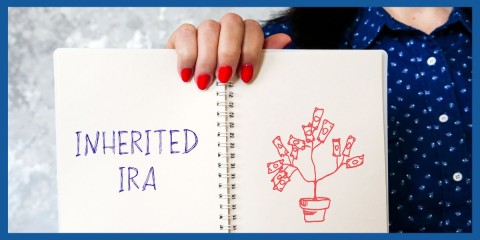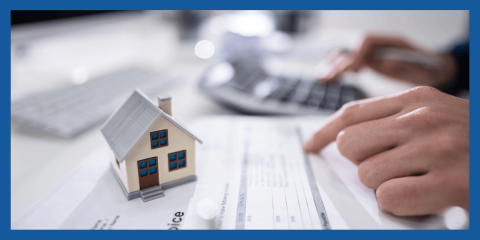What is an Inverted Yield Curve and How Does it Affect Me?
We’re headed for another recession. At least, that’s what people are saying, both on the news and elsewhere in the media. However, with an economy that’s thriving right now, where is all of this recession talk coming from? 
While we’re not going to dive into the many variables that are included in modern economics, one element that has financial analysts shook is the inverted yield curve. However, outside of stock exchanges and broker offices, chances are that you don’t understand what this curve is and what it means for the economy.
So, with that in mind, we want to break down this phenomenon and explain how it works, what it could mean for the future, and why you should pay attention.
What is an Inverted Yield Curve?
On the surface, an inverted yield curve refers to bonds - specifically, U.S. Treasury bonds. The shape of the curve slopes downward, with the amount of interest on the left and the length of the bond on the right. When this slope is inverted, it means that longer-term bonds are paying less interest than shorter-term ones, and that’s where the term inverted yield curve comes from.
Don’t worry if you didn’t really understand all of that. Let’s break it down further.
What is a Bond?
Bonds are a type of investment, and many investors like putting money in bonds. The most prevalent version is the U.S. Treasury bond, but you can buy them from many corporations or state and local governments. The way that a federal bond works is that you give your money to them and you get interest back when cashing out the bond (short-term government bonds) or on a 6 month to month schedule (long-term government bond).
Essentially, it’s like the government (or bank) borrowing money from you and paying interest, rather than the other way around. There are three primary reasons why investors love bonds.
First, they are incredibly stable. Buying bonds from an established financial institution is a smart move, as the only way it can default is if the bank (or government) goes out of business. Treasury bonds are even more secure since the U.S. government backs them. If the feds can’t pay you back, then chances are we’re looking at a serious collapse of the United States as we know it.
The second reason bonds are desirable is that they have a guaranteed rate of return. Investing in the stock market can be lucrative, but you could lose everything if you make some bad moves. Bonds, on the other hand, tell you how much interest you’ll earn based on the length of the bond. Typically, the interest rates are much lower, but you know what you’ll get back, so it’s easier to plan ahead.
Finally, in most cases, long-term bonds will pay higher interest rates. This is where the inverted yield curve comes into play. Usually, the curve will move upward, with longer bonds paying higher interest rates than shorter ones. However, as we already covered, an inverted yield curve indicates that the opposite is true. So, if you’re trying to buy long-term bonds, you may not get as much money back as you should.
As you can imagine, this can freak people out, particularly those who have a lot of money tied in bonds. An inverted yield curve illustrates weak investor confidence in long-term bonds, which can be a significant problem. Just imagine if everyone with bonds tried to cash them out simultaneously - the government would be in a serious financial bind.
Now that you have a little bit of a foundation, let’s get into the details of why this happens (and what you should do about it).
Why Do Yield Curves Invert?
The best way to think about this is to determine why interest rates are higher on long-term bonds in the first place. Typically speaking, the government wants to have more time to pay back these bonds, so the Fed raises interest rates to make them more attractive to investors.
However, there is a limit to how many bonds can be issued at that higher rate. Again, if everyone bought long-term bonds and cashed them out in 20 years, the government would be forced to pay a ton of interest.
So, when more people start to put money into these bonds, the Fed lowers the interest rate and makes short-term bonds more attractive. As with all economics, it’s about supply and demand and finding a balance.
But why are more people buying bonds right now, thus inverting the curve? Interestingly, it’s kind of a self-fulfilling prophecy. Investors believe that a recession could be coming in the near future, so they begin putting more money into shorter-term bonds. The Fed responds by lowering the interest rates, making them worry that a recession is imminent, which continues the cycle.
Right now, the yield curve isn’t fully inverted, but it’s definitely close. Unfortunately, when we look at historical precedents, this kind of trend has spelled recession recently.
Inverted Yield Curves in History
The housing market crash of 2008 was one of the most significant economic downfalls of the modern world. While it wasn’t quite as devastating as the Great Depression of the 30s, it came remarkably close.
Back in 2005, the Fed raised the federal funds rate, due in part to the growing bubble in the housing market (thanks to subprime mortgage loans). This rate hike caused long-term bonds to be worth less than short-term ones (4.39 percent compared to 4.4 percent).
As investors grew more and more worried about the housing bubble, they began putting more money into bonds, and the curve inverted accordingly. When the crash happened, the curve was pretty substantial.
This pattern has also occurred before the last seven recessions, so it’s a pretty good indicator that something could be wrong with the market.
That being said, it’s imperative to understand that inverted yield curves are not the cause of anything. Instead, they are a symptom of a much larger economic problem. In 2005, the only reason the Fed changed interest rates was because of the housing bubble. If that didn’t happen, the curve would have remained stable.
What an Inverted Yield Curve Means for Investors and Consumers
Again, don’t panic just yet. Even though these curves are usually an indicator of an impending recession, there are many other factors at play. Not only that but since the curve isn’t fully inverted yet, you have plenty of time to plan accordingly.
So, let’s look at the different ways that this curve could impact your life.
First, if you have money tied in long-term bonds, you’ll see the interest rate drop over the next couple of years. However, it will likely stabilize after that, so don’t assume that rates will be low forever. It can seem frightening at first but remember that the U.S. has always bounced back from a recession, and there’s no reason to believe we won’t again.
Second, if you have an adjustable-rate mortgage, your interest might go up. As the Fed raises rates for short-term bonds, many lenders will do the same. If you have a fixed-rate mortgage, though, then you don’t have to worry about it at all.
With that in mind, remember that the curve hasn’t fully inverted. Yes, the long-term rate was just below the short-term one (1.623 to 1.634, respectively). However, there is no indication of how long it will last or if it’s a sign of looming economic fears. It could just be an anomaly.
Not only that but even if the curve worsens over the next year or so, a recession may not happen for another year after that. With the housing crash, the inverted curve dropped and regained its balance before the recession hit. So, while planning now is a good idea, it could realistically be a couple more years before we see any substantial effects.
What Should You Do?
Right now, you may be feeling nervous, and that’s normal. However, planning for potential disaster can go a long way toward helping you feel better about it. While we’re not trying to paint a picture of doom and gloom, there’s nothing wrong with some extra preparation.
So, here are a few ways to alleviate your nerves.
Focus on Retirement Accounts
If you have a 401k with your employer, now is a great time to start adding more money to it. If a recession hits and we see the stock market go down, you’ll be buying more shares at even lower prices. Buying low is always a good thing.
Create an Emergency Fund
Calculate how much money you’ll need for a few months without a job. Depending on your industry, you may not have to worry about this, but it’s always a smart move to keep money on hand in case something happens.
Overall, having an emergency fund is an excellent way to alleviate fears. Even if you can’t keep as much money as you’d like in there, something is better than nothing. It will come in handy eventually.
Start Automating Your Savings and Investments
For most people, they spend money first and then save whatever is left. A better habit to get into is to save first and then spend the leftovers. By switching to that mentality, you will be surprised by how much you save in a relatively short period. Yes, you may need to dip into your savings from time to time, but it’s much better than going into debt.
One of the easiest ways to ensure that you follow this practice is to automate your savings. Set up a balance transfer with your bank to come out with each paycheck so that you don’t have to think about it. Figure out how much you can realistically budget out of your earnings and start there. Once you get used to having less cash on hand, it’ll be easier to follow through.
Contact NextGen Wealth Today
Investing can be a complicated process, and all of this talk about inverted yield curves might be a little overwhelming. Don’t go through this experience alone - instead, call us so we can assist you in planning for the future. We know what to expect for a recession and how to keep your money invested appropriately. Contact us today to find out more.


